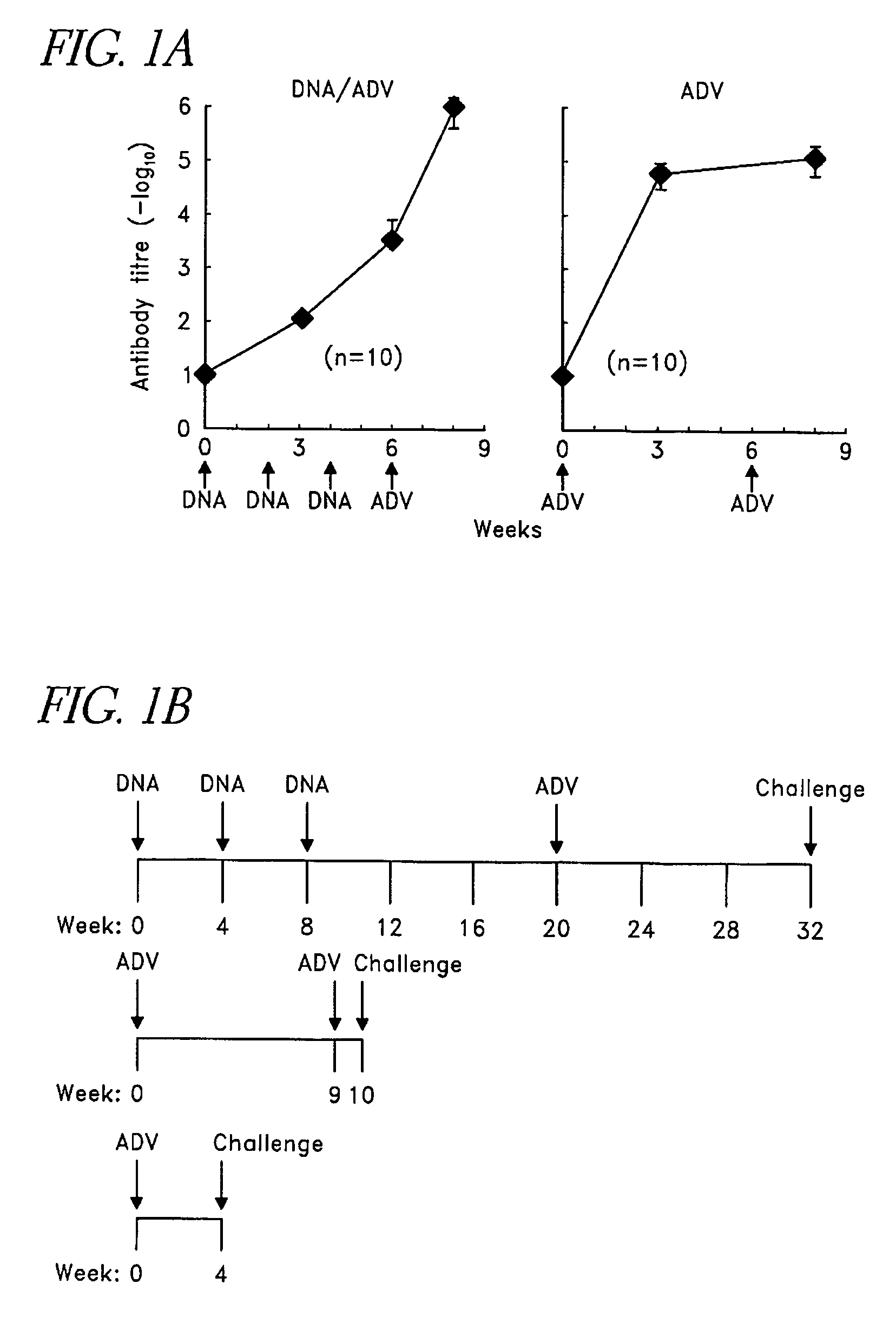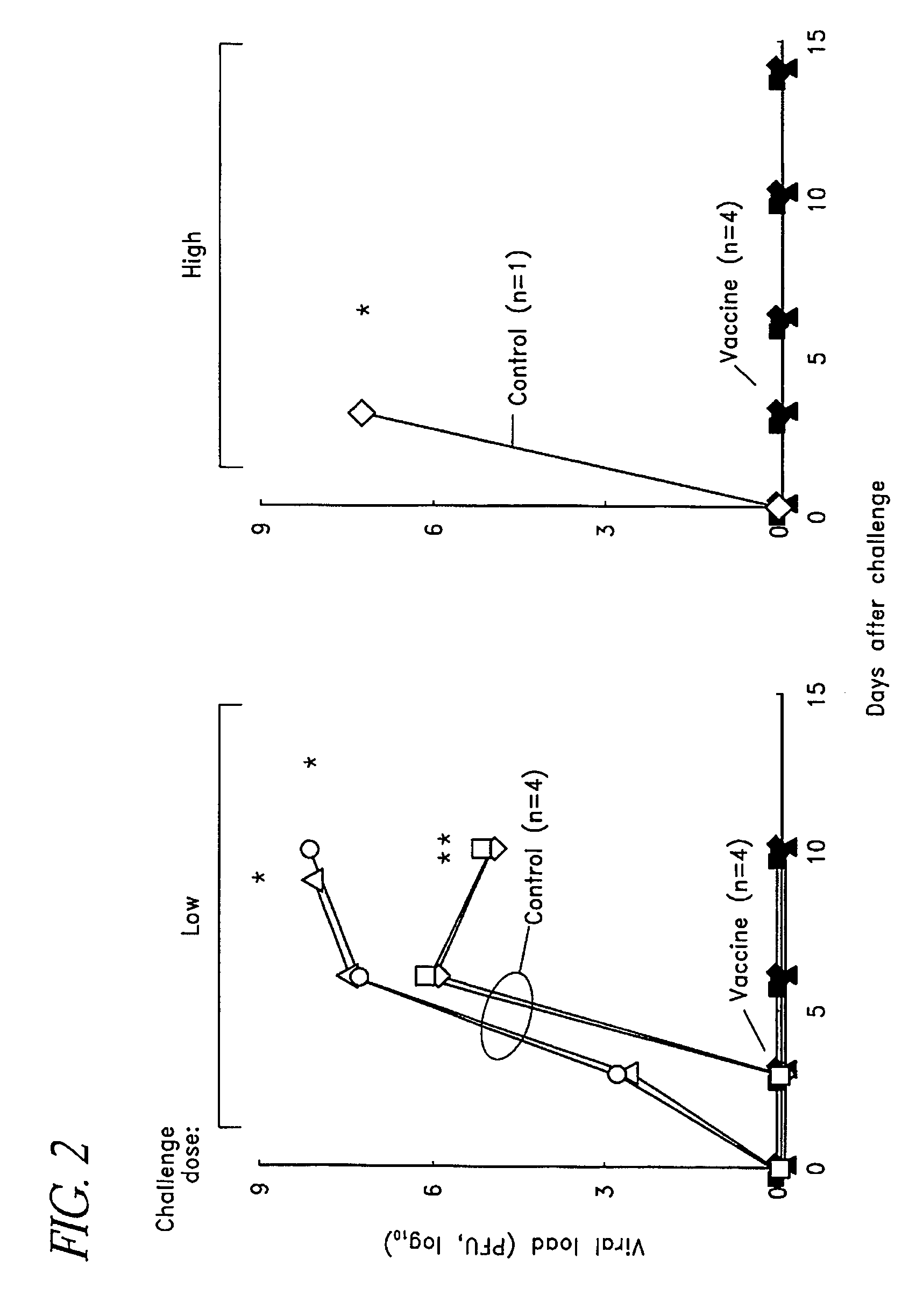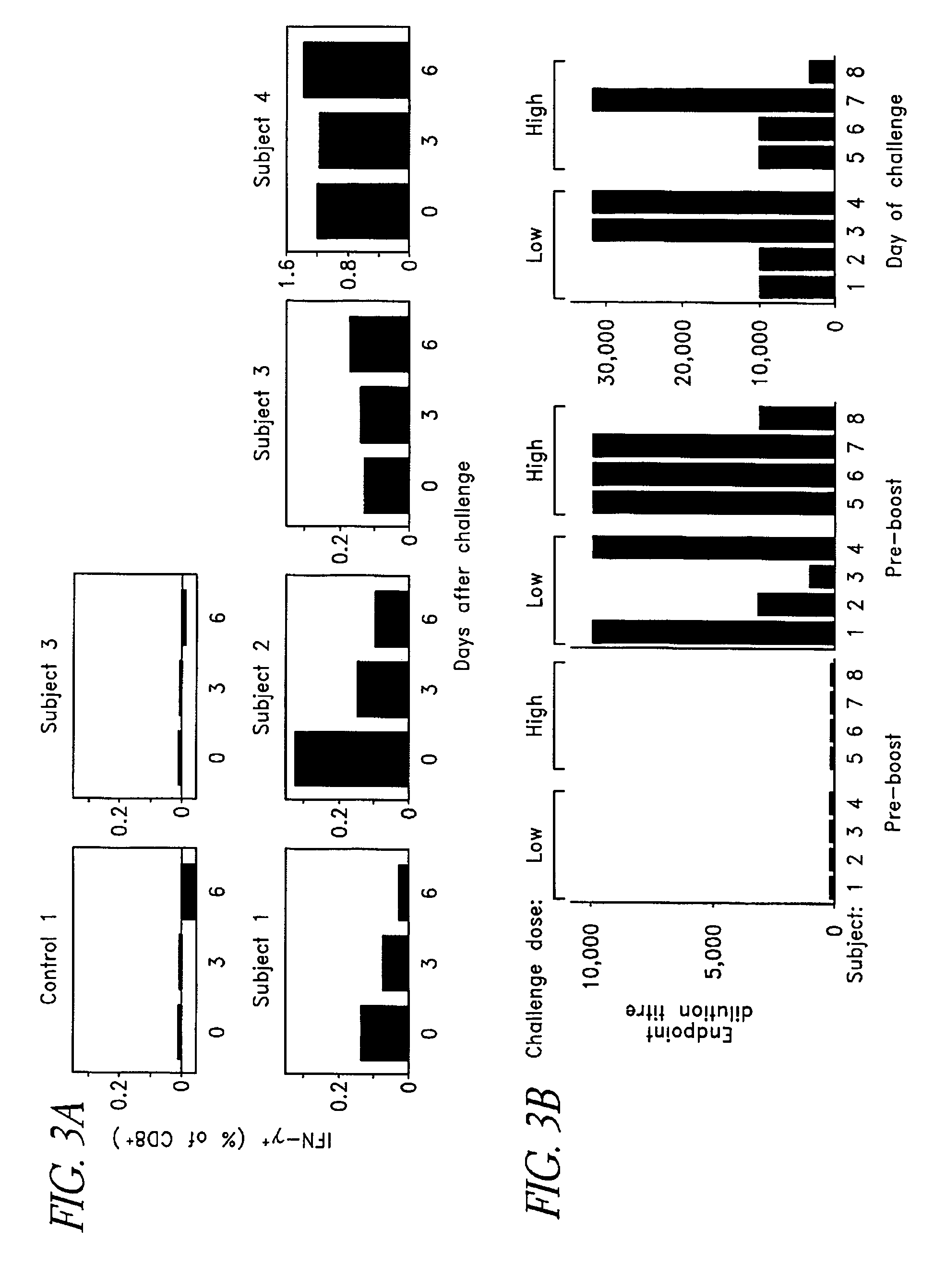Method of accelerated vaccination against Ebola viruses
a technology of ebola virus and accelerated vaccination, which is applied in the direction of viruses, peptides, medical preparations, etc., can solve the problems of little opportunity to develop acquired immunity, no antiviral therapy or vaccine that is effective against ebola virus infection in humans, and is not feasible to implement programs to control or eliminate viral reservoirs of transmission to human populations
- Summary
- Abstract
- Description
- Claims
- Application Information
AI Technical Summary
Benefits of technology
Problems solved by technology
Method used
Image
Examples
example 1
Vector Construction
[0080]ADV-GP and ADV-NP were prepared as described previously (Sullivan, N. J. et al. 2000 Nature 408:605-609). The recombinant adenoviral vector was made according to previously published methods (Aoki, K. et al. 1999 Mol Med 5:224-231). A dose of 1010 (mice) or 1012 (non-human primates) adenoviral vector particles for each component was administered to each animal without adverse effects.
Animal Study and Safety
[0081]Twenty cynomolgus macaques (Macaca fascicularis), 3 yr old and weighing 2-3 kg, obtained from Covance, were used for immunization and challenge experiments. The monkeys, housed singly, were anaesthetized with ketamine to obtain blood specimens and to administer vaccines. They received regular enrichment according to the Guide for the Care and Use of Laboratory Animals (DHEW number NIH 86-23). Before Ebola virus challenge and to the end of each experiment, the animals were maintained in the Maximum Containment Laboratory (BSL-4) and fed and checked da...
PUM
| Property | Measurement | Unit |
|---|---|---|
| temperature | aaaaa | aaaaa |
| optical density | aaaaa | aaaaa |
| concentration | aaaaa | aaaaa |
Abstract
Description
Claims
Application Information
 Login to View More
Login to View More - R&D
- Intellectual Property
- Life Sciences
- Materials
- Tech Scout
- Unparalleled Data Quality
- Higher Quality Content
- 60% Fewer Hallucinations
Browse by: Latest US Patents, China's latest patents, Technical Efficacy Thesaurus, Application Domain, Technology Topic, Popular Technical Reports.
© 2025 PatSnap. All rights reserved.Legal|Privacy policy|Modern Slavery Act Transparency Statement|Sitemap|About US| Contact US: help@patsnap.com



